Native armyworm species are currently present in many young maize and sorghum crops across southern and central Queensland. Sometimes it is just the occasional larva, but in other situations native armyworms are at higher densities than fall armyworm (FAW).

Native armyworm (left) are much less damaging than fall armyworm (right).
As far as we know, native armyworm are far less damaging to establishing crops than FAW and are unlikely to cause significant and persistent defoliation that impacts crop growth. The current recommendation is to ignore common armyworm and other native armyworm species when estimating FAW densities in vegetative maize.
Several native armyworm species may occur in maize in spring, including:
- common armyworm (Mythimna convecta).
The species regularly observed in barley and wheat in spring. - false armyworm (Leucania loreyi).
An attraction to some FAW pheromone lures can cause false armyworm moths to turn up in FAW traps in large numbers. - northern armyworm (Leucania separata).
- sugarcane armyworm (Leucania stenographa).
While it can be difficult to identify each of these native armyworm species, the following features can help you confirm whether native or fall armyworm larvae (or both) are present:
| Where to look | Fall armyworm | Native armyworm species |
| Collar (the segment behind the head) |
Three prominent stripes are visible that typically run the length of the body.
|
Three stripes are present – they may continue the length of the body.
|
| Rear segments | Dark, raised spots in a square pattern on the second-last segment. These spots are increasingly visible in 4th-6th instar larvae.
|
Spots may be present, but are not raised and dark even in larger larvae.
|
| Head capsule (forehead). | White, inverted Y on front. Head capsule mottled.
|
Y (if present) can be either dark or light coloured. No obvious mottling.
|
| Damage to establishing maize or sorghum plants. |
Varying levels of small – large holes in the leaf. Larger larvae will feed in the whorl and impact the emergence and size of the new leaf, producing copious amounts of poo in the whorl.
|
Holes along the margins of leaves and in emerging leaves. Larger larvae do not establish in the whorl and prevent the emergence of new leaf.
|
| Larval sizes and persistence in the crop |
Ongoing infestations arise from repeated egg laying as long as the crop is attractive. A mixture of small – large larvae are likely to be present. | Typically one egg laying event occurs with a single cohort of larvae. There may be a spread of larval size initially, but infestation is unlikely to persist. |
The Beatsheet has an A3 downloadable ID guide to armyworm larvae on its Publications and factsheets page.
It is likely that native armyworm larvae are often present in maize, but before FAW turned up in 2020, maize and sorghum crops did not require checking as frequently or as thoroughly in the vegetative stages – so they probably went unnoticed. Growers and agronomists will be familiar with common armyworm infesting barley and wheat in spring.
Note that Helicoverpa armigera may also be present at low densities in establishing maize and sorghum. Damage to plants by helicoverpa typically results in ‘shot holes’ in leaves which does not impact plant growth.
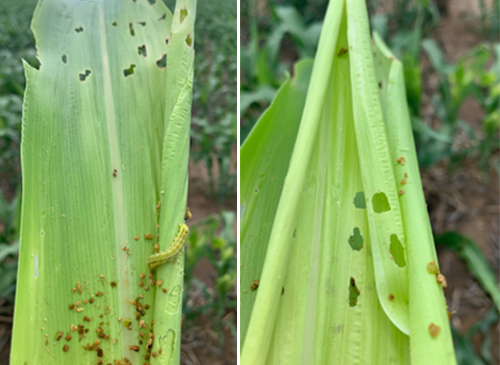
Helicoverpa ‘shot hole’ symptoms in young plants will not impact plant growth.
In more good news, agronomists are reporting very obvious signs of an active natural enemy population attacking both FAW and native armyworm larvae in the field. Adam Quade (DPI, Toowoomba) collected 200 FAW 2nd-3rd instar larvae from a maize crop at Goondiwindi two weeks ago and 85% of those larvae died from parasitism by Cotesia ruficrus (see images below). The same species has been seen in maize crops across the Downs. It is most likely that you will see the bundle of white cocoons stuck to leaves.
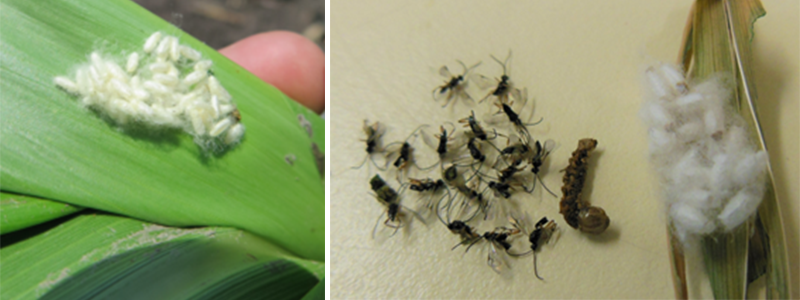
Examples of clusters of fluffy Cotesia pupae – a single caterpillar can produce many wasps.
Caterpillar larvae rarely show obvious signs of parasitism prior to the formation of the parasitoidal pupal cases. To assess the level of infection/parasitism in the armyworm larvae in your field, split open larvae and look for developing wasp larvae inside. This technique is also used to assess the level of Microplitis demolitor parasitism in helicoverpa larvae in sorghum.

Finding Cotesia sp. larvae by splitting caterpillars open.
Images: DPI staff and Steve Muller.

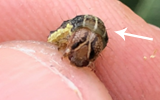
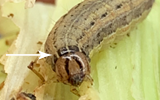
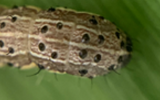
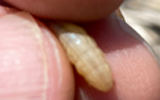

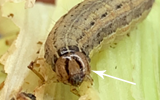
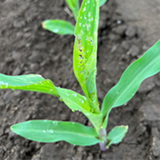
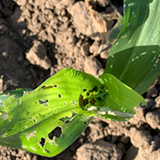
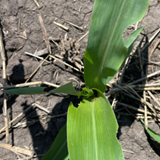

FYI – I commonly observed Cotesia cocoon masses in my maize trial site last week (7 Nov) at Lowood, along with adult activity. Up to this time (since FAW have emerged as a pest) I had only ever observed very low sporadic actvity, the first of which was last season.
The good guys starting to catch up!!
Regards Derek
Informative article.
Great work.